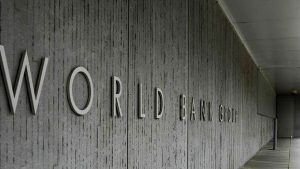WASHINGTON – Reforming the World Bank‘s approach to risk could unlock nearly $190 billion in additional urgently needed lending for developing countries without jeopardizing its AAA credit rating, a study commissioned by the Rockefeller Foundation found.
The study, carried out by international finance analytics firm Risk Control, found the bank‘s two main lending arms, the International Bank for Reconstruction and Development (IBRD) and the International Development Association (IDA), have “significant headroom” to boost lending.
Rockefeller hired Risk Control to review and quantify key recommendations made in 2022 by an independent Group of 20 panel, which said easing the bank‘s strict capital adequacy framework could free up hundreds of billions in additional lending to combat climate change and advance development.
The report, to be published early Wednesday, comes as the United States, China and other World Bank shareholders prepare to meet in Marrakech, Morocco next month to review and advance initial reforms already underway at the bank.
The study said the IBRD could boost lending by $162 billion over a decade or less before triggering a downgrade by global credit rating agencies, while IDA, which lends to the poorest countries, could boost lending by $21 billion to $27 billion.
In fiscal 2023, which ended June 30, IBRD made net new lending commitments of $38.6 billion, while IDA committed $34.2 billion.
It said IBRD and IDA could boost lending to nearly $900 billion if the rating agencies changed their processes and modified the allowance they make for “callable capital,” commitments by shareholders to supply additional resources in the event of severe financial problems.
Use of innovative approaches, including hybrid capital, could provide further funds, the study concluded, while securitizing 10% of IBRD and IDA’s portfolios could generate additional lending headroom of $29 billion to $41 billion.
The bank has already increased its leverage ratio to squeeze out an additional $50 billion in lending over a decade, but World Bank President Ajay Banga on Tuesday said the bank could potentially double that amount with international contributions.
Eric Pelofsky, vice president at the Rockefeller Foundation, said Risk Control conducted a math-based and transparent analysis that confirmed additional lending capacity was possible, even beyond the levels mapped out to date.
“This is the math, absolutely as detailed and transparent as you could possibly get, that says there’s more room,” he said. “It very clearly says that there are actions that can be done now while we consider other more long-term reforms to the bank.”
Hans Peter Lankes, a professor at the London School of Economics and member of the G20 panel, said the study provided “timely benchmarks” for shareholders and World Bank management as they scoped out ways to boost lending.
Some experts argue that developing and emerging economies need $2.4 trillion per year to meet global climate challenges.
“We need this because the developing world is pitching off a cliff in terms of debt, available climate finance, development needs,” Pelofsky said. “And from a geopolitical standpoint, the Bank, the Fund, the regional development banks are infinitely more transparent than some of the obvious alternatives.”
The Biden administration is pushing the World Bank as a “credible alternative” to China’s overseas lending, which U.S. officials say is often not transparent and often uses collateralized loans that pose risks to countries later. – Reuters
